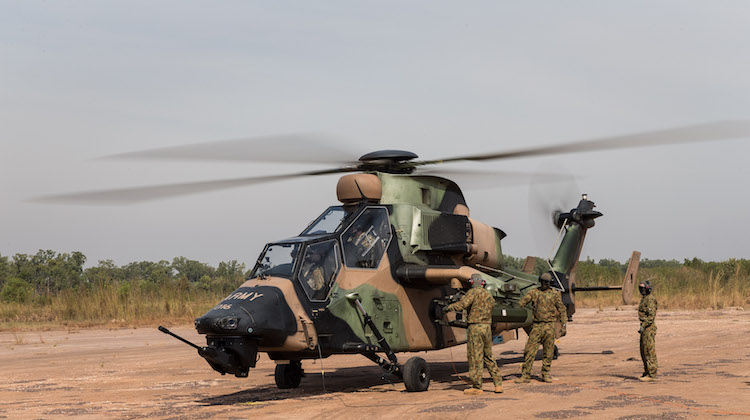
Defence has grounded the Australian Army’s Tiger armed reconnaissance helicopter fleet, following a fatal crash involving a German Tiger in Mali.
As of August 14, Defence decided to cease flying operations “until further information becomes available”, a spokesperson for Defence told Australian Aviation.
The brief statement from Defence did not give a reason for the grounding of the fleet of 22 attack helicopters, and the spokesperson did not mention the crash nor any advice from Airbus Helicopters.
The Australian reported on August 13 that Airbus had issued a bulletin stating it had declared an “unsafe condition” for all Tiger helicopters.
A spokesperson for Airbus Helicopters stated that it is obliged to keep Tiger operators informed, and emphasised that the cause of the crash is not known.
“The Tiger safety warning is a contractual process which is applied to inform the users about continued airworthiness-related topics,” the spokesperson told Australian Aviation.
“As manufacturer, [Airbus Helicopters] has the obligation to keep the users updated on any development related to an accident or incident. AH cannot currently exclude any root cause due to the early stage of the investigation and the information level made available to AH.
“The warning was issued shortly after the accident and has been updated last Thursday in relation to the accident investigator preliminary report; it is not based, however, on additional information or possible root causes of the accident.”
Reuters reported on August 9 that the German helicopter began to break up while in flight and lost its main rotor blades.















